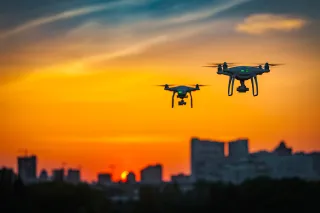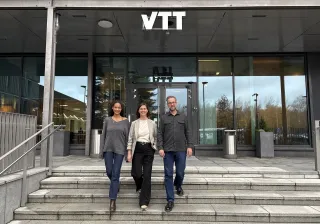Does your organization struggle to find the right way to organize foresight? Or are you in the early stages of initiating foresight activities, seeing the potential but not sure how to start? As a relatively novel capability, systematic foresight can be a unique superpower in global competition.
Read the summary
- The function-driven model integrates foresight into existing departments, focusing on innovation but often struggling with a narrow scope. An independent foresight unit enables radical innovation, though may become detached from daily business processes.
- Executive team-led models embed foresight in leadership for strategic insights, but potentially lacking broader engagement within the organisation. In contrast, platform-based models promote broad participation, requiring careful coordination to avoid fragmentation.
This summary is written by AI and checked by a human.
Many companies face the challenge of structuring foresight efforts to maximize their impact. Complicating matters, foresight often faces legitimation struggles - its value is not always immediately recognized, leading to limited resources and lack of commitment. Yet, choosing the right approach can be the key to turning foresight into a powerful tool for future-proofing your business.
Corporate foresight allows organizations to navigate uncertainty by anticipating trends, managing risks, identifying opportunities, and creating novel future-fit solutions. However, building a foresight capability is rarely straightforward.
Based on our extensive research into leading global firms, such as Kone, ABB, and Metsä Group, we find companies often adopt one of four models to organize their foresight activities. Each approach comes with unique strengths and challenges. Understanding these models can help you align your foresight efforts with your company’s needs and strategic goals. These approaches provide a foundation for building more comprehensive organizing models as foresight capabilities mature. In the comprehensive systems, these models are also often combined.
The four models
The function-driven model integrates foresight into existing departments, such as R&D, embedding it into the daily operations of business units. This approach excels at stimulating innovation and responding to emerging opportunities since futures knowledge is closely tied to functional priorities. However, it has its limits – it often struggles with a narrow focus and limited influence on top-level decision-making. If your organization is looking for short-to-medium-term foresight tightly linked to operational goals, this might be the right fit.
In contrast, an independent foresight unit operates as a specialized team solely focused on futures work, often tasked with promoting radical innovation or identifying entirely new business opportunities. This model allows for in-depth analysis and concentrated expertise but can risk being disconnected from day-to-day business concerns. If your company requires transformative insights or operates in a fast-paced, competitive environment, the independence of this model may prove invaluable.
The executive team-led model places foresight at the center of leadership activities, ensuring futures thinking directly informs strategy work. By embedding foresight into centralized decision-making, this model fosters long-range planning and strategic insights. However, it can sometimes lead to a lack of engagement with broader organizational units, as insights tend to stay confined to the executive level. For companies undergoing significant strategic shifts, this model offers a powerful way to integrate foresight with overarching business priorities.
Lastly, the platform-based model decentralizes foresight by creating systems and tools accessible across the organization. This approach thrives on broad participation, making foresight part of everyday decision-making across teams. While it fosters an inclusive and dynamic foresight culture, it requires careful coordination to prevent information overload and cultural fragmentation. If your organization values collaborative foresight and diverse contributions, this model can unlock the collective potential of your workforce.
Find the beneficiaries
Selecting the right model is about more than picking a structure - it’s about understanding how foresight aligns with your organization’s culture, resources, and objectives. Start by identifying who within your organization stands to benefit most from foresight and how their needs can be addressed effectively.
Success in one area often leads to broader recognition within the firm, creating opportunities to expand the model and embed foresight more deeply across the firm. This gradual approach ensures foresight becomes a valued tool, driving strategic impact on multiple levels.
VTT’s recently published guidebook, "Organising Corporate Foresight – A Guide to Future-Ready Business Strategy", provides actionable insights and tools for integrating foresight into corporate strategy, enabling businesses to anticipate and adapt to future trends effectively. As a global leader in research and innovation, VTT supports organizations in embedding foresight into their sustainability and business strategies, offering expertise in scenario planning, trend analysis, and systems thinking. To explore how VTT can help your organization become future-ready, download the guidebook here:
Organising corporate foresight: A Guide to future-ready business strategy | VTT






